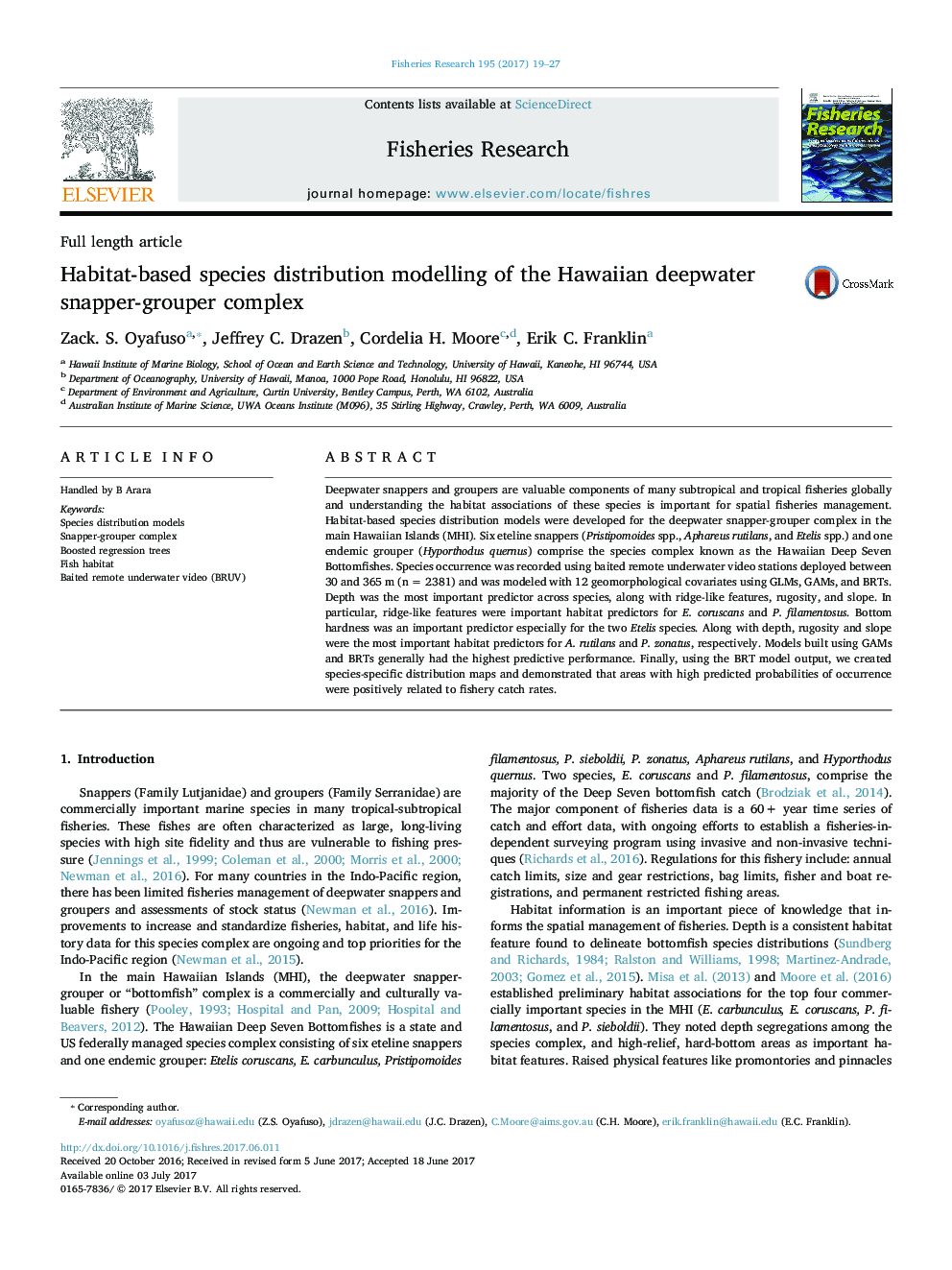| کد مقاله | کد نشریه | سال انتشار | مقاله انگلیسی | نسخه تمام متن |
|---|---|---|---|---|
| 5765500 | 1626775 | 2017 | 9 صفحه PDF | دانلود رایگان |
- Habitat niche-based models were produced for Hawaiian deepwater snapper and grouper species using GLMs, GAMs, and BRTs.
- Depth, slope, bottom hardness and rugosity were habitat features that predicted the distribution of most of the species.
- The inclusion of a residual autocovariate increased deviance explained and predictive performance across model and species.
- Probability of occurrence was related to fishery CPUE, linking model predictions of species hotspots with fishery yields.
- The produced species distribution maps can be the foundation for future work to better inform spatial fisheries management.
Deepwater snappers and groupers are valuable components of many subtropical and tropical fisheries globally and understanding the habitat associations of these species is important for spatial fisheries management. Habitat-based species distribution models were developed for the deepwater snapper-grouper complex in the main Hawaiian Islands (MHI). Six eteline snappers (Pristipomoides spp., Aphareus rutilans, and Etelis spp.) and one endemic grouper (Hyporthodus quernus) comprise the species complex known as the Hawaiian Deep Seven Bottomfishes. Species occurrence was recorded using baited remote underwater video stations deployed between 30 and 365 m (n = 2381) and was modeled with 12 geomorphological covariates using GLMs, GAMs, and BRTs. Depth was the most important predictor across species, along with ridge-like features, rugosity, and slope. In particular, ridge-like features were important habitat predictors for E. coruscans and P. filamentosus. Bottom hardness was an important predictor especially for the two Etelis species. Along with depth, rugosity and slope were the most important habitat predictors for A. rutilans and P. zonatus, respectively. Models built using GAMs and BRTs generally had the highest predictive performance. Finally, using the BRT model output, we created species-specific distribution maps and demonstrated that areas with high predicted probabilities of occurrence were positively related to fishery catch rates.
Journal: Fisheries Research - Volume 195, November 2017, Pages 19-27
